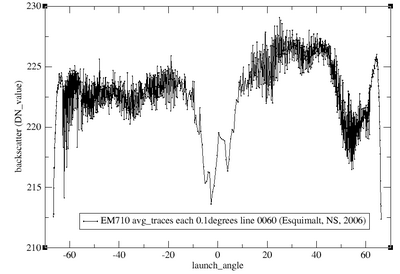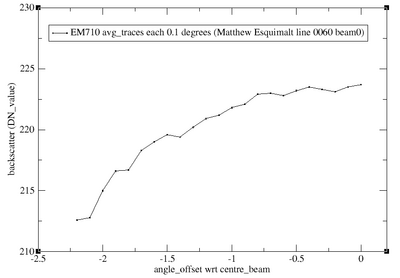This research used EM710 multibeam data in the EDBS65 mode. The narrow beams (1 degree) and reduced swath (130 degrees) produce outer beams recovering only ~7% of the total swath width. But, systems capable of emitting more than one crosstrack profile per transmission started to be developed, which will allow surveyors to extend their swath again (150 degrees) without loosing alongtrack superposition. Despite the lower quality of outer beams (>65 degrees) to bathymetric purposes due to the refraction problem, the capacity of logging them can be useful for seafloor classification applications. Therefore, normalization of outer beams still represent a good solution for newer sonars. The figures below show the trace patterns for the entire swath and for the first beam:




